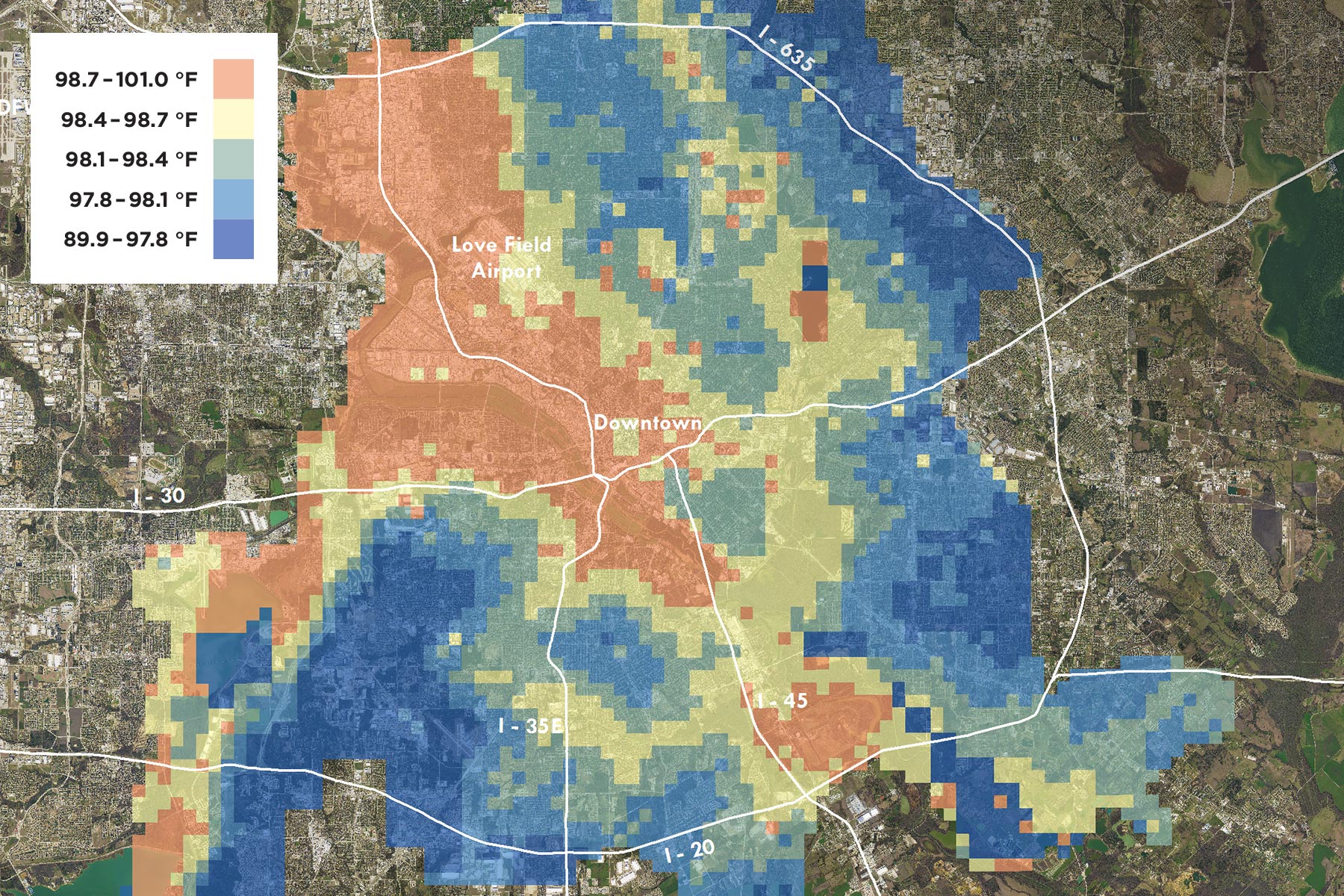As climate change continues to push up average temperatures across the state, we can expect Dallas to feel the heat even more acutely than its rural neighbors. This is because of what’s known as the “urban heat island effect.” It’s a pretty straightforward concept. Concrete absorbs heat, so places where it is densely concentrated along with other building materials (big cities) are going to be up to several degrees warmer than greener areas, where trees (more specifically, the process of evaporative transpiration) help cool the air.
One solution, from the Dallas nonprofit Texas Trees Foundation? Plant more trees. Simple enough. As D Magazine reported in its September issue, some cities have taken it upon themselves to combat the urban heat island effect: “Chicago planted 500,000 trees in the last 15 years to fight rising temperatures. Los Angeles now requires builders to use heat-reflecting roofing materials.”
Today in Denver, voters will decide on a more dramatic measure to keep the city cool. The “green roof” initiative, put on the ballot by environmental activists who wrangled up the necessary signatures, would require any new building projects of 25,000 square feet or more to include rooftop gardens or solar panels. The rule would also apply to any existing buildings undergoing renovations or expansions.
Critics say installing those gardens or solar panels would be too costly and burdensome for building developers, owners, and their tenants. A case of government overreach, in other words.
Toronoto has adopted its own strong green roof laws, while cities like Seattle and Austin, among others, offer incentives to encourage dense developments with green roofs. Dallas has a green building ordinance with certain environmental requirements for new buildings, mostly designed to help conserve energy and water, but nothing near as bold as what’s being considered in Denver.
Even if this particular initiative goes overboard in its requirements, it had enough grassroots support to get on the ballot in the first place. Whatever voters decide in Denver, the initiative, and others like it, bring attention to a very understandable and basic problem: Our cities are getting hotter. This is an acute discomfort for anyone that ever wants to step onto a Dallas sidewalk, and it’s a serious threat for the dozens of people who die of heat-related causes here every year. Trees can help make the air more breathable, the heat less oppressive, and the city more beautiful.
How cities decide to respond to this can vary, but any approach is likely going to need more greenspace in place of concrete, on the tops of buildings or otherwise.





